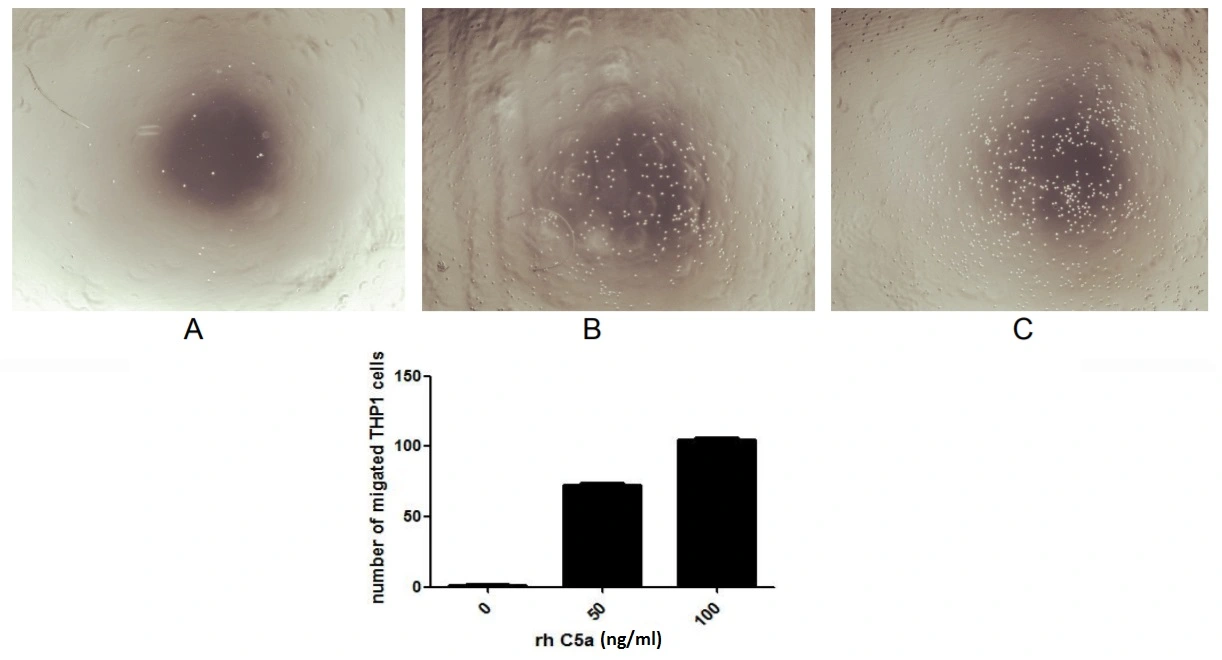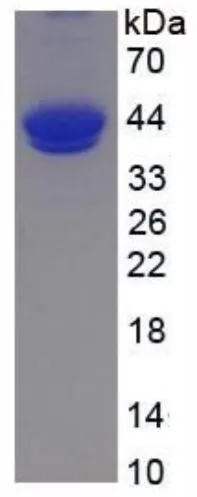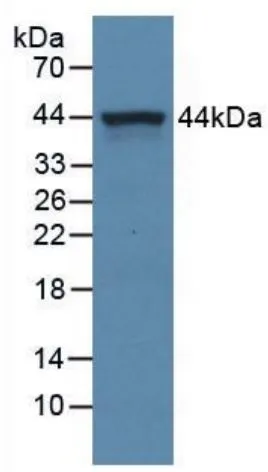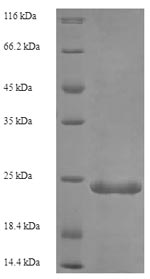
The chemotactic effect of GTX00416-pro Human C5a protein (active). Upper: (A)THP-1 cells were seeded into the upper chambers and serum free RPMI-1640 without C5a was added in lower chamber, then cells in lower chamber were observed at low magnification (x100) after incubation for 3hrs. (B) THP-1 cells were seeded into the upper chambers and 50 ng/ml C5a was added in lower chamber, then cells in lower chamber were observed at low magnification (x100) after incubation for 3hrs. (C) THP-1 cells were seeded into the upper chambers and 100 ng/ml C5a was added in lower chamber, then cells in lower chamber were observed at low magnification (x100) after incubation for 3hrs. Lower: The number of migrated cells were counted at high magnification (x400) randomly (five fields for each filter).
Human C5a protein, His and Fc tag (active)
GTX00416-PRO
ApplicationsFunctional Assay
Product group Proteins / Signaling Molecules
Protein IDP01031
Overview
- SupplierGeneTex
- Product NameHuman C5a protein, His and Fc tag (active)
- Delivery Days Customer9
- Application Supplier NoteComplement Component 5a (C5a) is a component of the complement system which plays a key role in promoting migration and adherence of neutrophils and monocytes to vessel walls. C5a has been proven to be able to induce chemotactic migration of THP-1 cells. Therefore, chemotaxis assay used 24-well microchemotaxis system was undertaken to detect the chemotactic effect of C5a on the human monocytic cell line THP-1. Briefly, THP-1 cells were seeded into the upper chambers (100 microl cell suspension, 106 cells/ml in RPMI-1640 with 0.5% FBS) and C5a (50 and 100 ng/ml diluted separately in serum free RPMI-1640) was added in lower chamber with a polycarbonate filter (8 microm pore size) used to separate the two compartments. After incubation at 37C with 5% CO2 for 2h, the filter was removed, then cells in low chamber were observed by inverted microscope at low magnification (x100) and the number of migrated cells were counted at high magnification (x400) randomly (five fields for each filter). C5a is able to induce migration of THP-1 cells.
- ApplicationsFunctional Assay
- CertificationResearch Use Only
- ConjugateUnconjugated
- Protein IDP01031
- Protein NameComplement C5
- Scientific DescriptionThis gene encodes a component of the complement system, a part of the innate immune system that plays an important role in inflammation, host homeostasis, and host defense against pathogens. The encoded preproprotein is proteolytically processed to generate multiple protein products, including the C5 alpha chain, C5 beta chain, C5a anaphylatoxin and C5b. The C5 protein is comprised of the C5 alpha and beta chains, which are linked by a disulfide bridge. Cleavage of the alpha chain by a convertase enzyme results in the formation of the C5a anaphylatoxin, which possesses potent spasmogenic and chemotactic activity, and the C5b macromolecular cleavage product, a subunit of the membrane attack complex (MAC). Mutations in this gene cause complement component 5 deficiency, a disease characterized by recurrent bacterial infections. Alternative splicing results in multiple transcript variants. [provided by RefSeq, Nov 2015]
- Storage Instruction-20°C or -80°C,2°C to 8°C
- UNSPSC12352202




